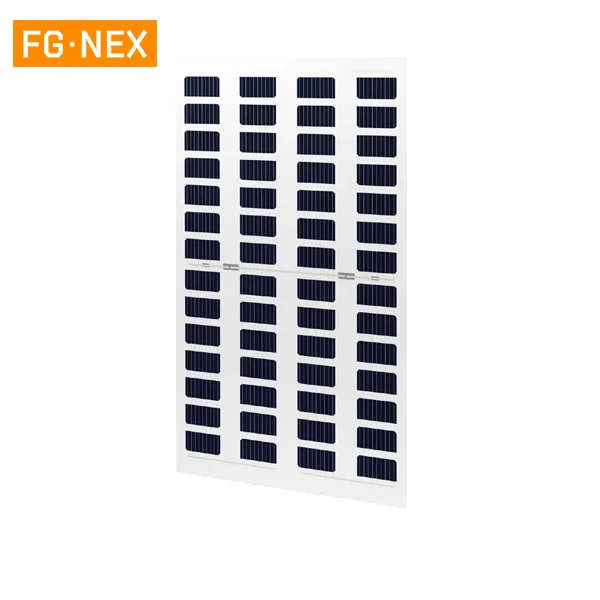- This topic is empty.
-
AuthorPosts
-
17/02/2025 at 13:52 #2852
As the global demand for clean energy continues to grow, solar energy is increasingly used as a renewable energy source. Traditional monofacial solar panels have dominated the market, but in recent years, bifacial solar panels have gradually become a highly regarded alternative. So, how much more efficient are bifacial solar panels than monofacial panels? This article will take a deep look at the efficiency, advantages, and performance of bifacial solar panels in practical applications.
Bifacial solar panels are solar panels that can generate electricity using both front and backlight. Compared with traditional monofacial panels, bifacial panels have a more unique design. They are usually composed of two pieces of glass, and the back can receive light from the ground, reflected sunlight, or the surrounding environment. This makes bifacial solar panels have higher power generation efficiency and energy output, especially in environments with sufficient reflected light.
1. Efficiency advantages of bifacial solar panels
Bifacial panels improve photovoltaic power generation efficiency
Traditional monofacial solar panels can only absorb sunlight from the front, while bifacial panels can use reflected light from the back. According to research, the total power generation of bifacial solar panels is about 10% to 30% higher than that of traditional monofacial panels. The specific value of this gap depends on factors such as the installation environment, lighting conditions, and reflectivity.
Improved energy capture capability
The efficiency improvement of bifacial panels is closely related to the utilization of reflected light. Under certain circumstances, the reflected light that can be received on the back significantly increases the ability to capture solar energy. For example, under highly reflective ground conditions such as snow and desert, bifacial panels can effectively capture reflected light and further improve power generation efficiency. Therefore, the advantages of bifacial solar panels in these specific environments are more obvious.
Enhanced adaptability and flexibility
The design of bifacial solar panels not only enables them to perform well in highly reflective areas but also has higher adaptability in installation angles and directions. For different types of installations such as roofs and ground, bifacial panels can maximize the use of ambient light and improve the performance of the overall system. In addition, the back of bifacial panels can absorb more scattered light, and can still maintain good power generation efficiency in cloudy and cloudy weather.

2. Comparison of bifacial solar panels with single-sided panels
Performance comparison
Efficiency improvement: As mentioned earlier, the overall efficiency of bifacial solar panels is about 10% to 30% higher than that of single-sided panels. This improvement is due to the fact that bifacial panels can effectively utilize reflected light, increasing the total energy capture capacity of photovoltaic panels.
Cost difference: Although the cost of bifacial panels is usually higher than that of monofacial panels, the cost of bifacial panels is gradually decreasing as the technology matures and the scale of production expands. In the long run, the high efficiency of bifacial panels can bring higher returns to users, so its cost-effectiveness is gradually recognized by the market.
Environmental adaptability
Utilization of reflected light: Bifacial solar panels have obvious advantages in environments with strong reflected light (such as snow and desert). Monofacial panels can only utilize front sunlight, which is limited by lighting conditions and has low efficiency.
Performance on cloudy days: In cloudy or cloudy conditions, the back of bifacial panels can receive more scattered light, so their power generation efficiency is relatively high, while monofacial panels are more affected.
The emergence of bifacial solar panels has brought significant efficiency improvements to the field of solar power generation. Compared with traditional monofacial panels, bifacial panels can provide higher power generation capacity by utilizing both front and back sunlight at the same time, especially in environments with high reflectivity. Although its initial cost is high, with the continuous advancement of technology and the expansion of production scale, the economic efficiency of bifacial solar panels is gradually improving, and it has broad development prospects in the global solar energy market in the future. When choosing solar panels, users should consider the advantages and disadvantages of single-sided and bifacial panels according to their own needs and installation environment to maximize the utilization of solar energy and power generation efficiency.
http://www.fgnexsolar.com
Wuxi Fgnex Technology Co., Ltd. -
AuthorPosts
- You must be logged in to reply to this topic.